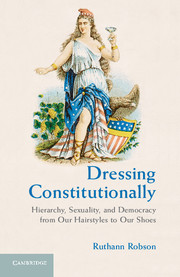4 - Dressing Professionally
Published online by Cambridge University Press: 05 July 2013
Summary
Attire can communicate professional status. At times, apparel is the metonym for the profession – for example, “robes” is understood to mean “judges” in the American legal context. At other times, there are rigidly established conventions of dress, such as military uniforms, that convey hierarchies. And at most times, customs of dress and grooming are subject to fluctuating policies that may or may not be explicit, specific, or even understood, even as such policies are usually sexualized, hierarchal, and undemocratic. In all of these situations, however, there are constitutional concerns.
In private employment, dress and grooming policies are subject to federal statutory protections against discrimination. However, the reach of these protections is incomplete, often incoherent, and subject to constitutional constraints and challenges. In public employment, the military uniform serves as a paradigmatic dress code. Even as military uniforms have shaped constitutional development in recondite ways, they have also been subject to constitutional challenges, both by authorized and unauthorized wearers. Government interests in uniformity have extended to paramilitary uniforms, such as those worn by police officers and even bus drivers, and judges have accorded deference to government justifications over individual constitutional rights of free expression. Professional dress in academic and legal contexts is rooted in the history of the clerical gown, yet contemporary practices raise constitutional questions of rights, as well as constitutional structures and symbolism.
- Type
- Chapter
- Information
- Dressing ConstitutionallyHierarchy, Sexuality, and Democracy from our Hairstyles to our Shoes, pp. 80 - 102Publisher: Cambridge University PressPrint publication year: 2013



